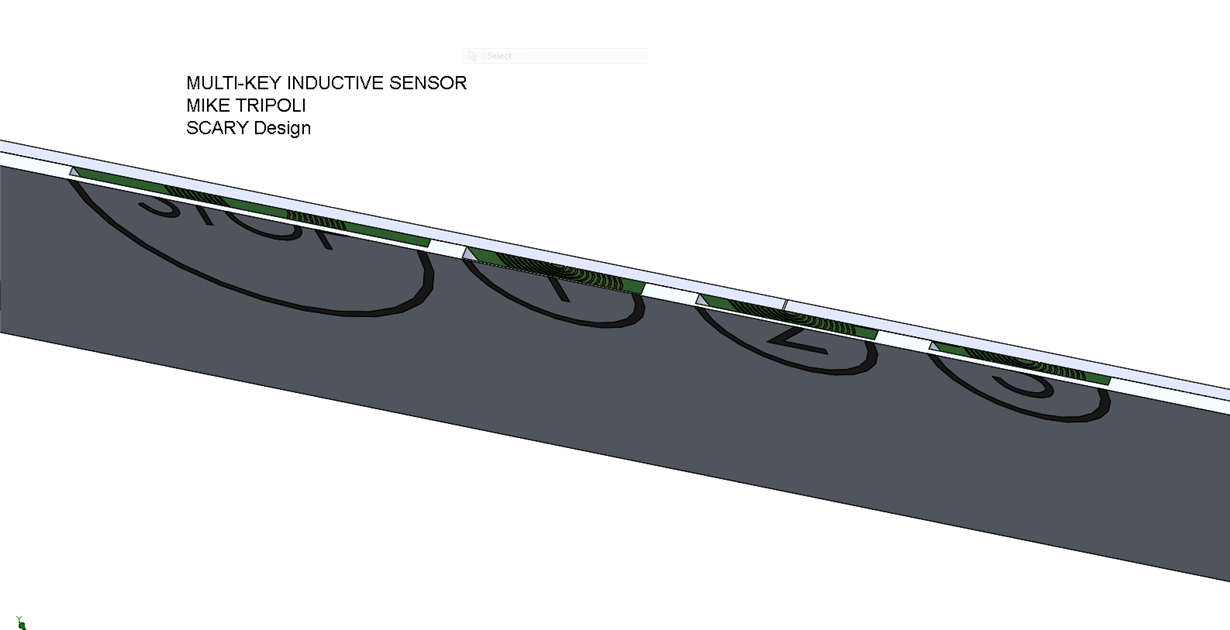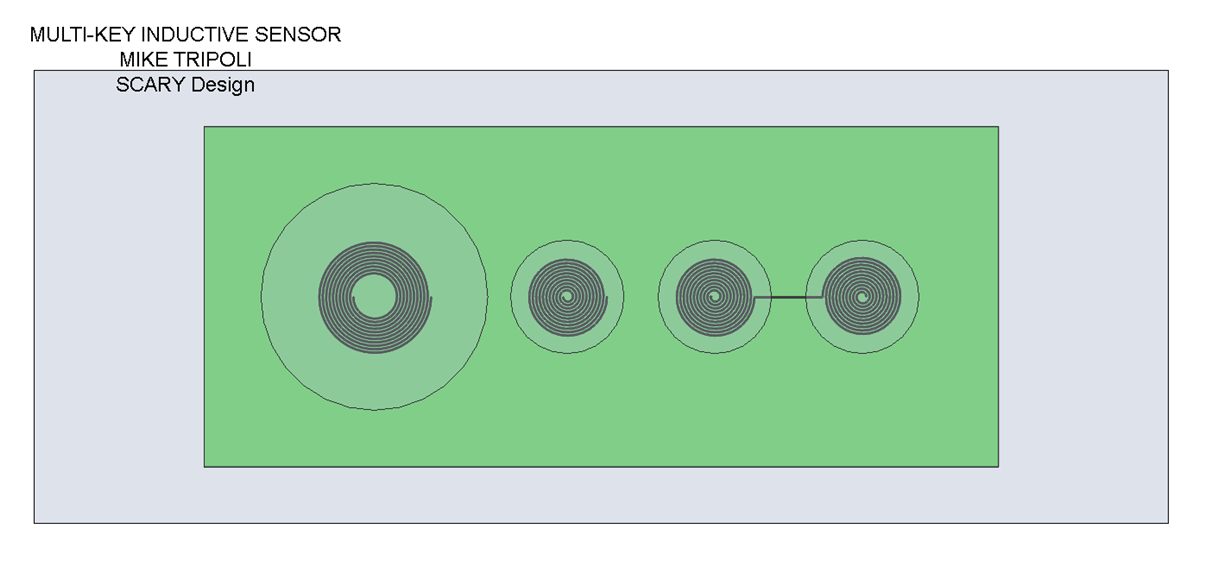Other Parts Discussed in Thread: LDC2114
Hi,
I've looked at the inductive sensing devices a number of times for various applications. I have a question regarding the LDC2114 (applies to the other devices as well perhaps).
The LDC2114 device can sense four (4) "buttons". Is it *possible* that one could make a "series" arrangement of the sense coils, such that the device could report back which of the "buttons" is being depressed based upon the change in inductance from that particular key? Obviously the device is very capable of sensing very small changes in inductance. If, just thinking out loud, the keys (coils) in series are different sizes, the resulting measurement *should* indicate 'which key was pressed".
Thanks,
Mike Tripoli
TI MVP




